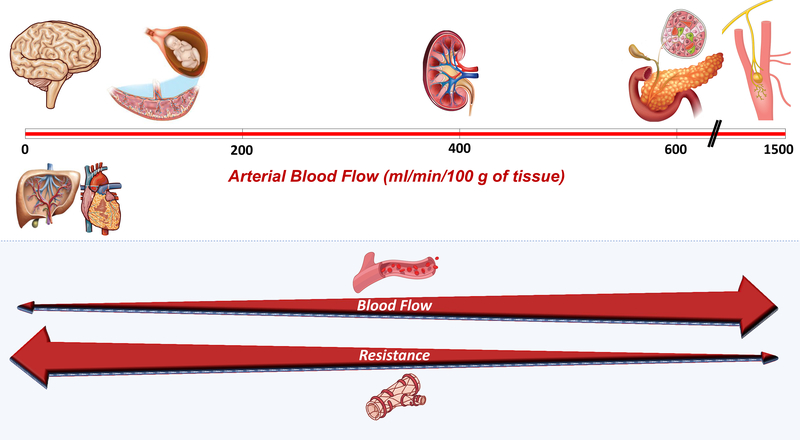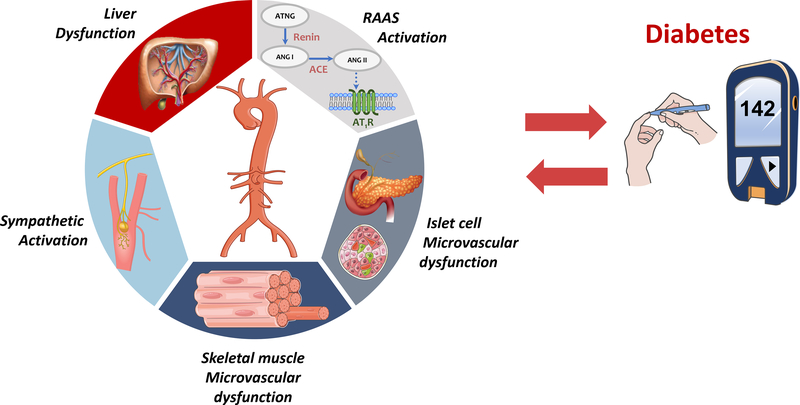Figure.
A. Arterial blood flow relative to tissue mass in low-resistance, high-flow organs. Organs are placed along a vertical axis in which higher flow rates per 100 g of tissue increase from left to right red bar). The lower panel demonstrates the inverse relationship between local flow and local resistance, which is largely a microvascular property. We note that although there is a wide range of resistance and blood flow as shown, organs in the figure are all considered to exhibit “low resistance-high flow” hemodynamics, compared to most other organs (such as the gut, the skin, subcutaneous tissue, or skeletal muscle at rest). Of note, measurements of bulk pancreatic blood flow in humans (used to estimate islet flow rates) vary in the literature. It should also be noted that liver blood flow is much higher to what is depicted in the figure, which only considers arterial hepatic flow.
B. Mechanisms that underlie the relationship between large artery stiffness and DM. RAAS=renin-angiotensin-aldosterone system.


